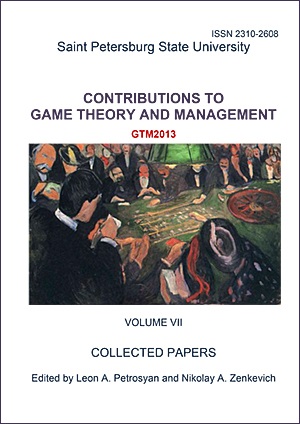Stackelberg Oligopoly Games: the Model and the 1-concavity of its Dual Game
Abstract
This paper highlights the role of a significant property for the core of Stackelberg Oligopoly cooperative games arising from the noncooperative Stackelberg Oligopoly situation with linearly decreasing demand functions. Generally speaking, it is shown that the so-called 1-concavity property for the dual of a cooperative game is a sufficient and necessary condition for the core of the game to coincide with its imputation set. Particularly, the nucleolus of such dual 1-concave TU-games agree with the center of the imputation set. Based on the explicit description of the characteristic function for the Stackelberg Oligopoly game, the aimis to establish, under certain circumstances, the 1-concavity of the dual game of Stackelberg Oligopoly games. These circumstances require the intercept of the inverse demand function to be bounded below by a particular critical number arising from the various cost figures.
Keywords:
Stackelberg oligopoly game, imputation set, core, efficiency, 1-concavity
Downloads
References
Downloads
Published
How to Cite
Issue
Section
License
Articles of "Contributions to Game Theory and Management" are open access distributed under the terms of the License Agreement with Saint Petersburg State University, which permits to the authors unrestricted distribution and self-archiving free of charge.




